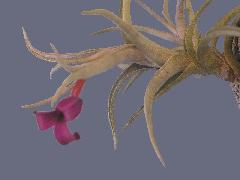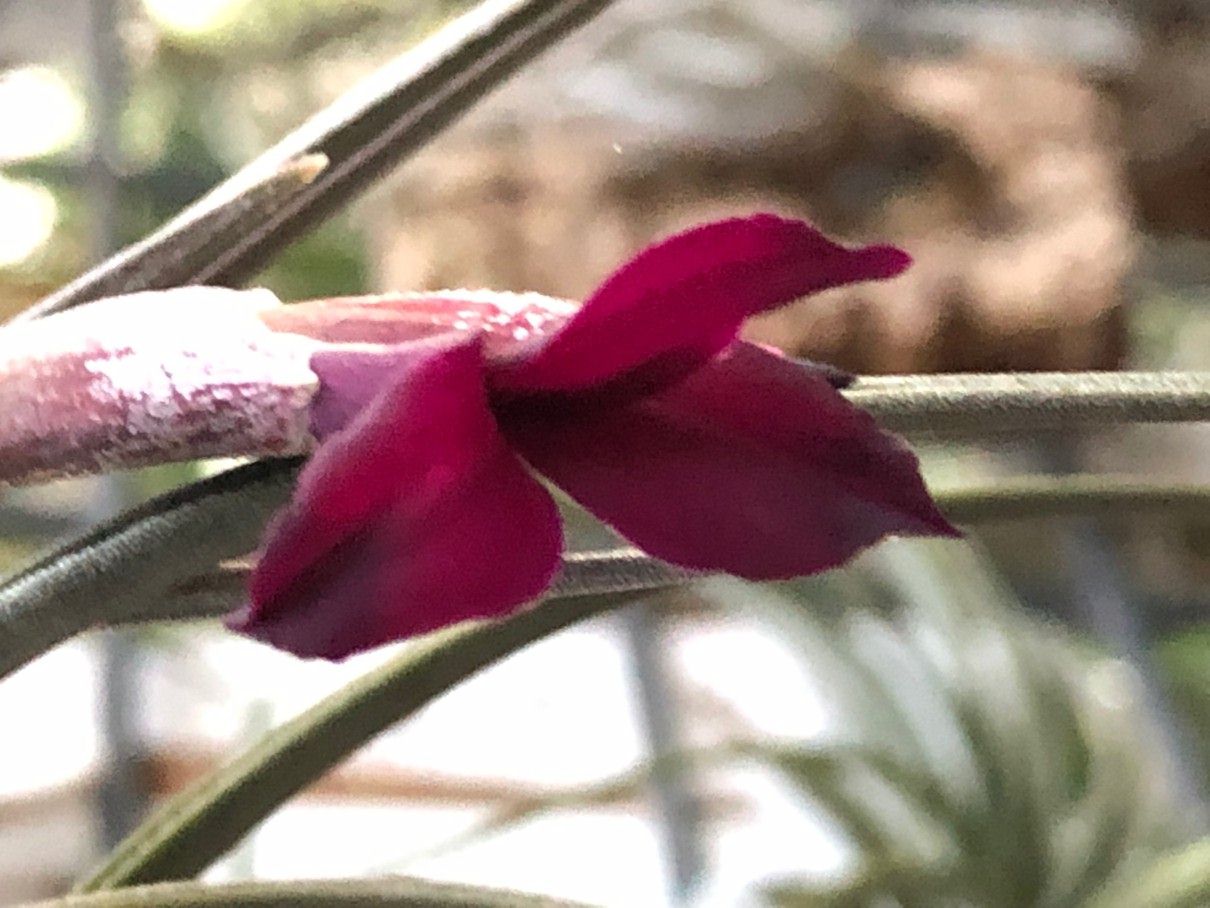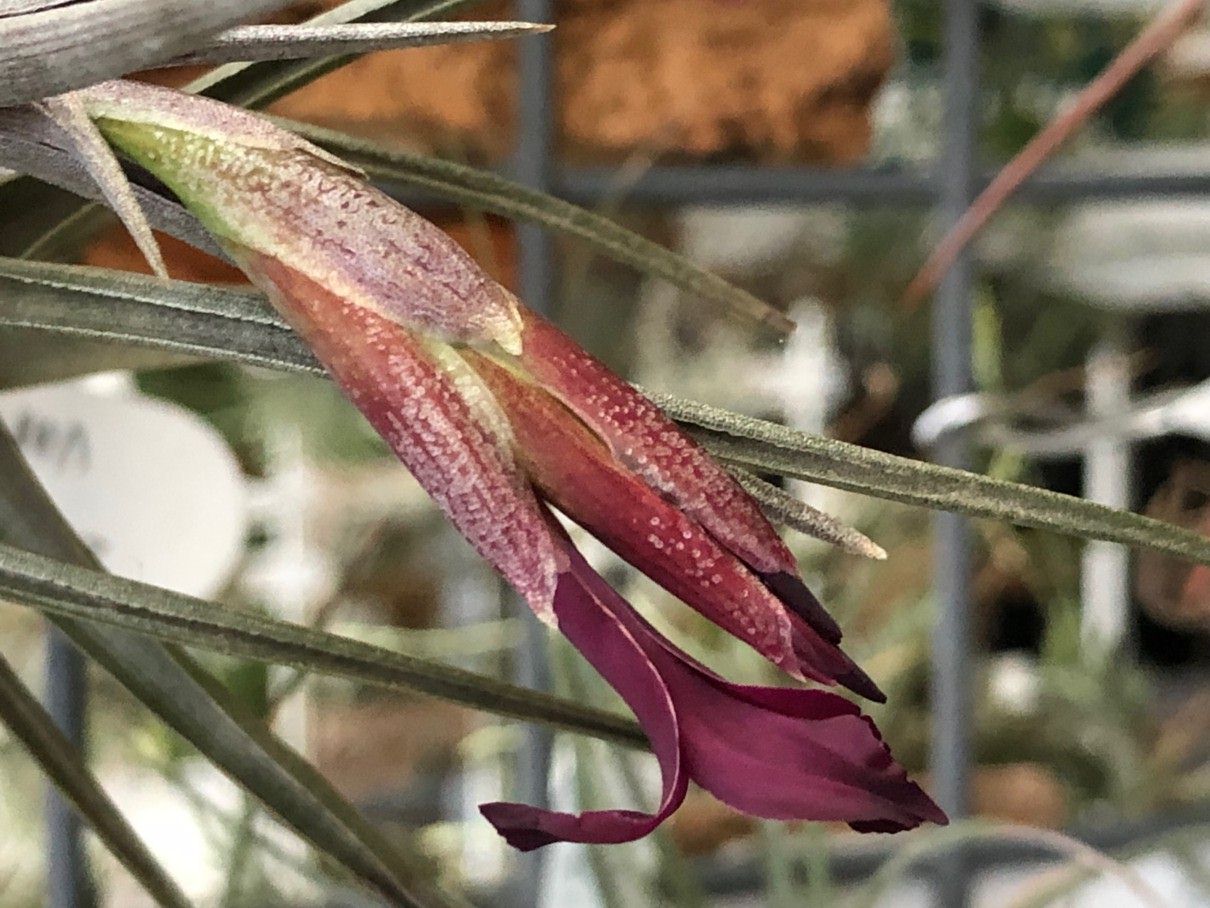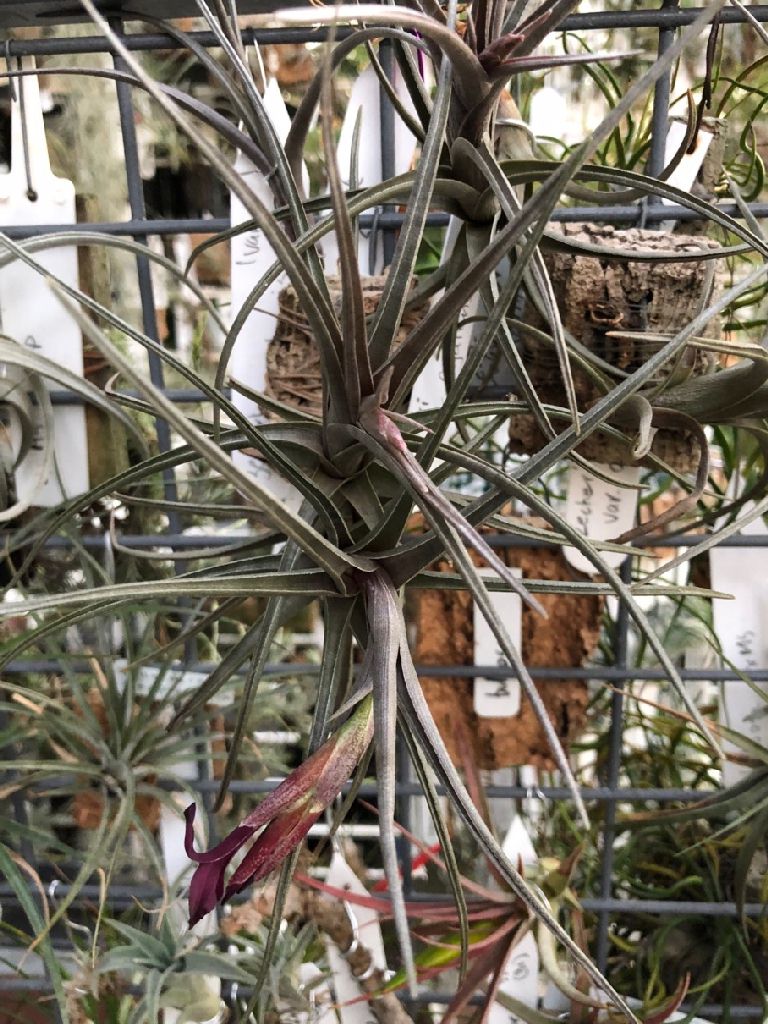








In the period of 1982 to 1985 Mark Dimmitt of Tucson, Arizona saw the potential that T. albertiana had and wondered how its brilliant coloured flower could be combined with other species. He tried hybridising with 7 other species and the long wait started. Flowering started in the early1990’s and each crossing seemed to have its own character. A few plants were donated to local plant Societies but most have been distributed by Rainforest Flora and Bird Rock Tropical in California under their grex parentage. So, many of you may well be the owner of one of these man-made hybrids.
Natural hybrids – that is not made directly from Man’s influences but possibly indirectly because of Man’s influence on the environment - tend to be forgotten by the specialist botanist. It is for this reason that there is a list of these under Cultivar Corner on the Website http://BSI.org . There is also a link to a Natural hybrid data base maintained by fcbs.org. You will notice that many of these are tillandsias. Some have been formally described with herbarium specimens and some not described but recorded by formula which is perfectly legal under the ICBN rules. The seed parent is not known for obvious reasons and the ones reported to me are shown in alphabetical order. Because of the evolution of natural hybrids very rarely would they be of an F1 generation. If these hybrids are found in different locations they could well have backcrossed to either parent showing a range of plants between either parent. From a Registrars perspective I am not enamoured with the idea of these being given a cultivar name because as we know a cultivar name should only follow the clone (offset). However, the right to name because of its uniqueness is with the applicant and all I can do is advise! A check should be made in the Natural hybrid list to see what problems have to be faced. An example of what can happen is (ionantha x schiedeana) which has been named under ICBN rules as xrectifolia and under ICNCP rules as ‘Jack Staub’. It is your decision as to which of the three names you call your plant!
Man-made hybrids are not recognised under the ICNCP rules unless they have a Cultivar name and a photograph instead of the herbarium specimen. Here, you should know both parents and the role they play.
Many are F1 generation meaning their progeny should look similar and can share the same cultivar name. BUT NOT ALWAYS so you need to be vigilant. As you are aware, ever since becoming Registrar and having the luxury of an easily accessible Data base, I have been promoting the legitimization of man-made hybrids known only by their formula.
Because we now have photographs, some of Mark Dimmitt’s hybrids have been named and information is as follows. Note that seed parent is named first and its name is that used at the time of pollination.
‘Mystic Albert’ = stricta x albertiana, named by D Butcher
‘Mystic Burgundy’ = muhriae x albertiana, named by B Timm
‘Mystic Circle’ = meridionalis x albertiana, named by D Butcher
‘Mystic Flame’ = albertiana x ixioides (and reverse), named by M Dimmitt
‘Mystic Flame Orange’ = albertiana x ixioides (and reverse), named by M Dimmitt
‘Mystic Rainbow’ = albertiana x arequitae, named by D Butcher
‘Mystic Rainbow Peach’ = albertiana x arequitae, named by D Butcher
‘Mystic Rainbow Pink’ = albertiana x arequitae, named by D Butcher
‘Mystic Trumpet’ = albertiana x xiphioides, named by M Dimmitt
‘Mystic Trumpet Peach’ = albertiana x xiphioides, named by M Dimmitt
‘Mystic Trumpet Pink’ = albertiana x xiphioides, named by M Dimmitt
‘Mystic Twins' = albertiana x geminiflora, named by D Butcher
I hope this is just the start of us separating natural hybrids from man-made ones.